About the 1,500
Residents Surveyed
Many of the residents we surveyed are:
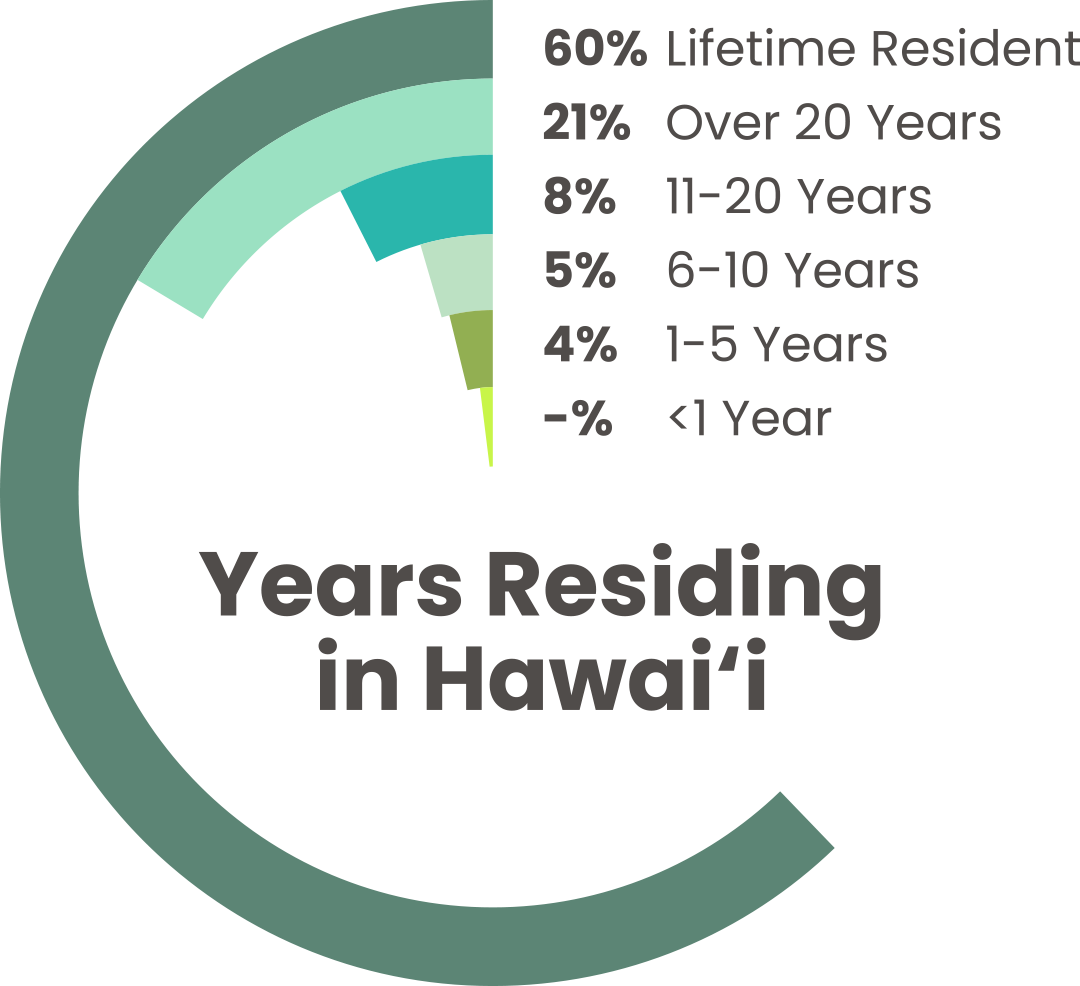
It’s a story we’ve heard too often
Understanding the experiences of locally employed residents
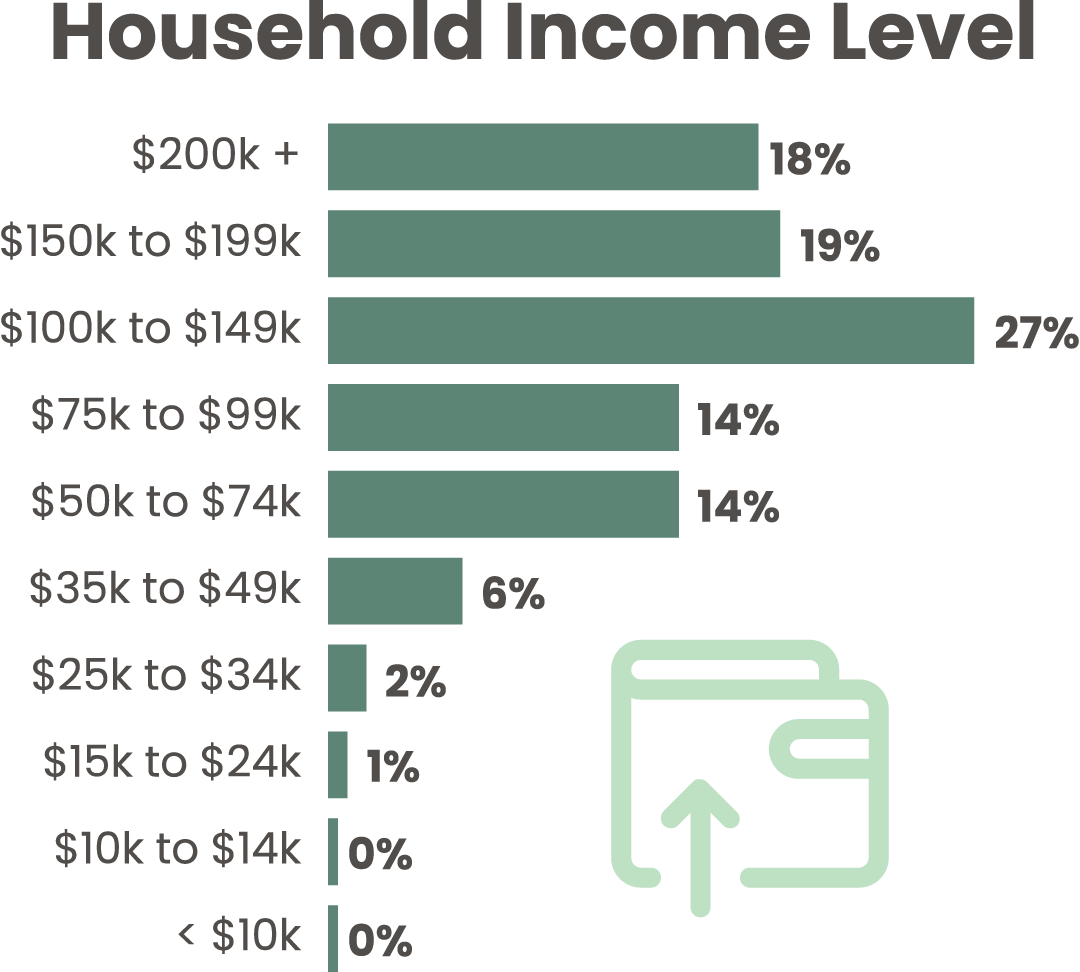
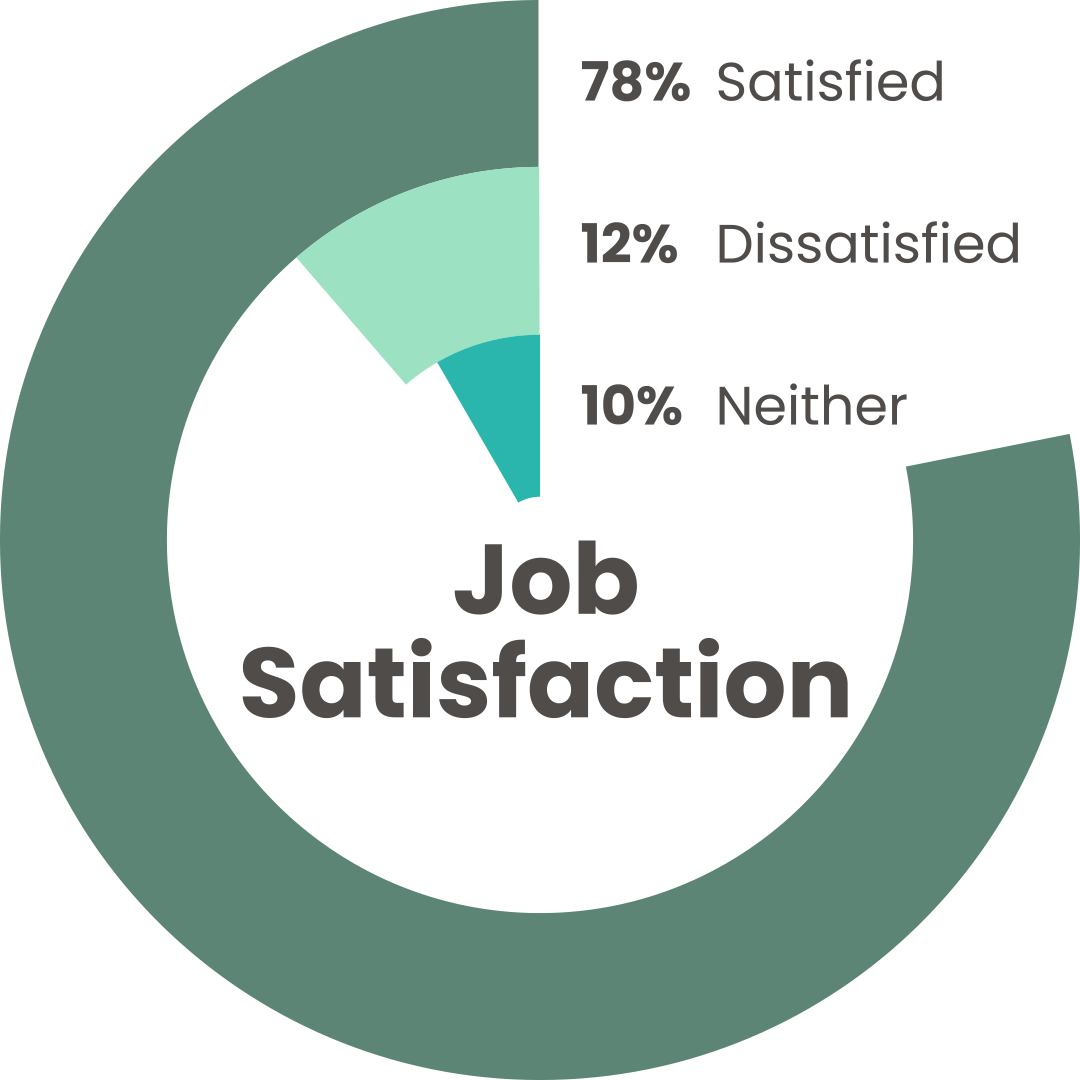
Housing is far and away the biggest expense for local families, and respondents are sacrificing to stay in Hawai‘i.
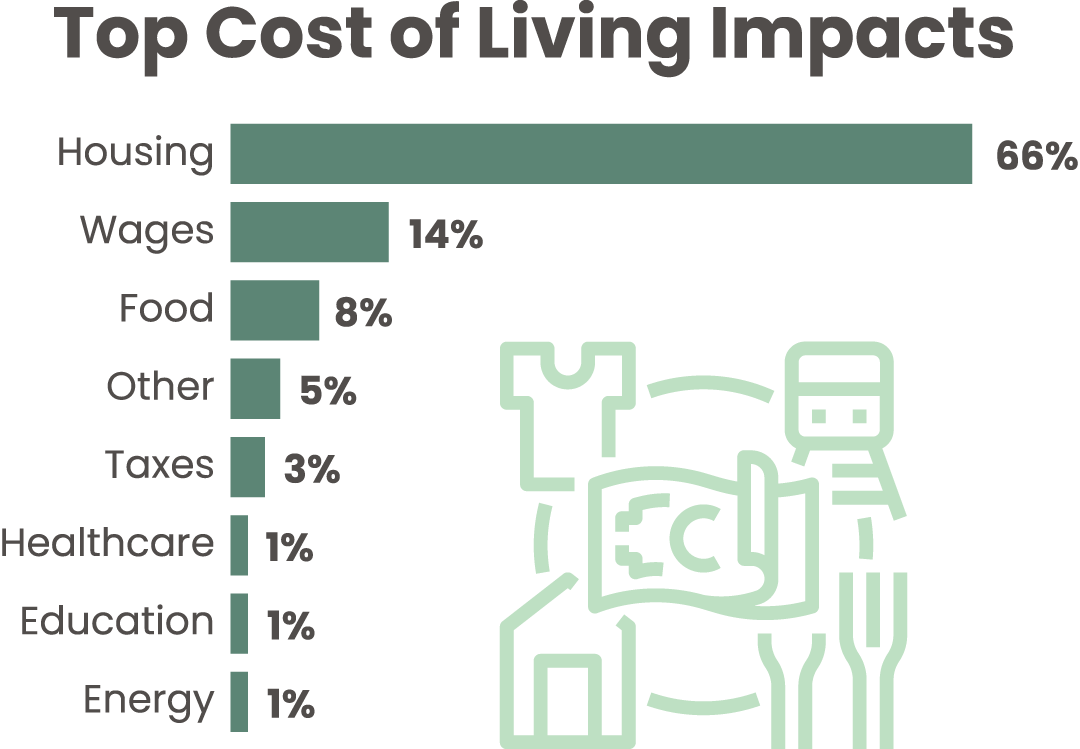
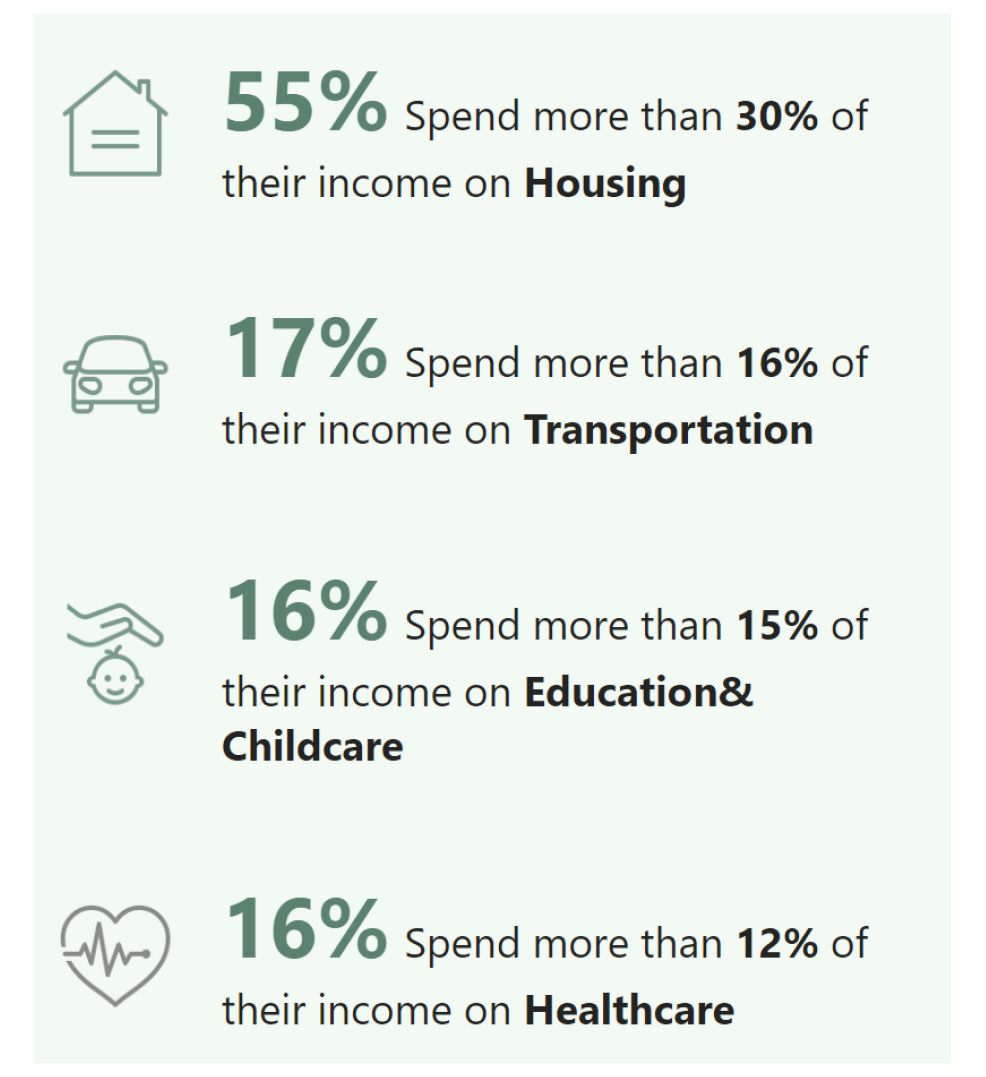
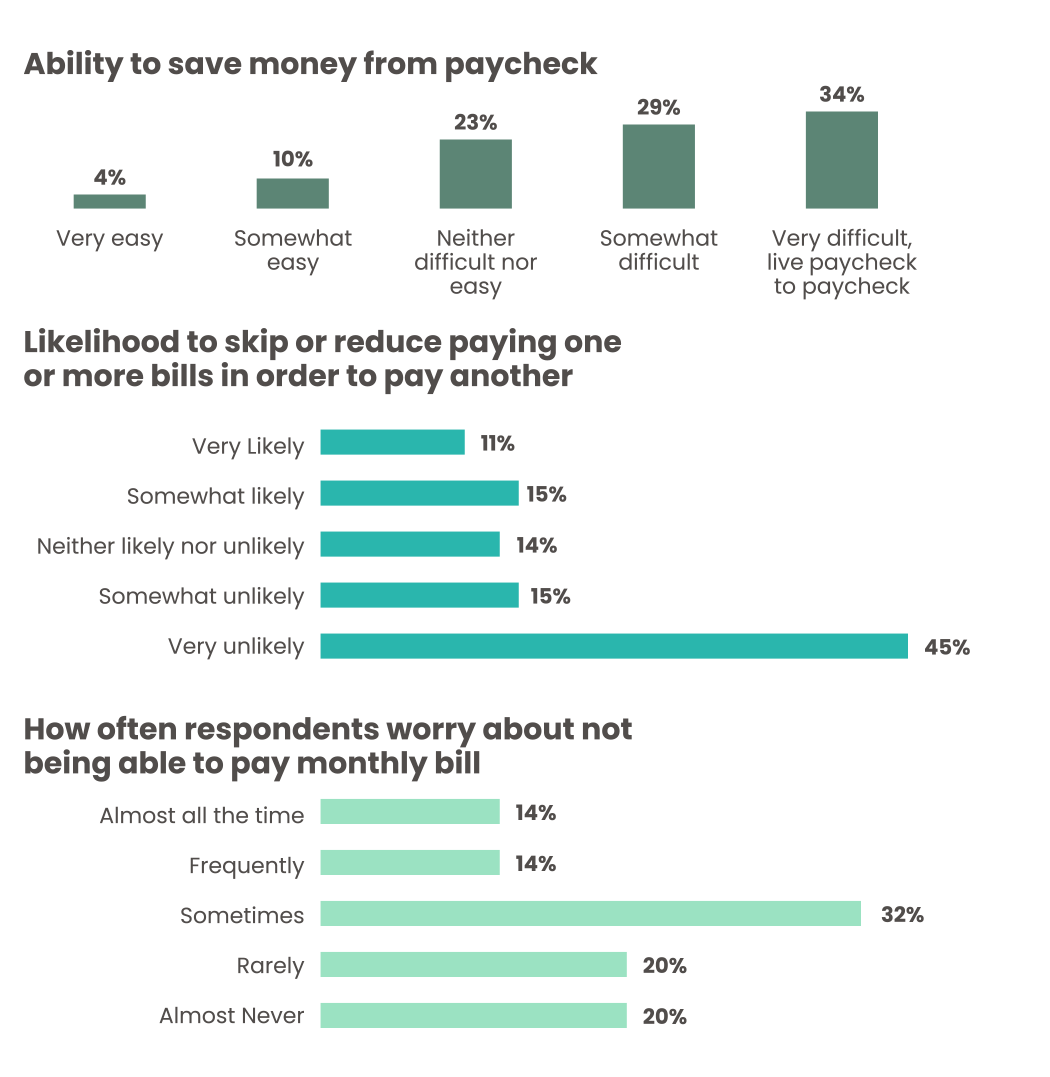
How do you stretch your income?
“Extremely conservative purchases of non-necessities. Consistent use of coupons, rewards, and discounts available in-app store & restaurant purchases. Growing some of our household’s food. Sharing between extended family. Only drive when absolutely necessary (to conserve fuel). Established ‘no-spending’ goal days.
“I don’t spend unless its on bills or food. No ‘fun’ money or ‘shopping’ money on most occasions. Buy unhealthy food that can stretch through days rather than getting the more expensive healthy food.”
“We are forced to using credit cards to pay for groceries and other necessities therefore always reaching max credit card balance and unable to get out of debt.”
“My spouse and I have multiple jobs. We do not have car payments. We work hard to reduce our utilities usage. We bike to our 2nd / 3rd jobs to reduce gas costs. We babysit our grandchildren so our children can reduce their expenses and get ahead/pay their bills. Our married children live with us so they can save and because they cannot afford rent on their own in Hawaii. We are minimalists in that we do not purchase new items if possible (purchasing off of marketplace or community). We are not ‘materialistic’ in the sense of purchasing much beyond our needs. Our family activities are generally low or no cost (outdoor activities/free events).”
Hawai‘i’s Middle-Income Workers Weigh Leaving
Despite high job satisfaction, the crippling cost of living in Hawai‘i is driving many to consider moving to more affordable states.
A staggering 70% of respondents say they will- or are unsure if they will – relocate in the coming years. These are the very workers powering Hawai‘i’s economy, now on the brink of leaving their homes behind.
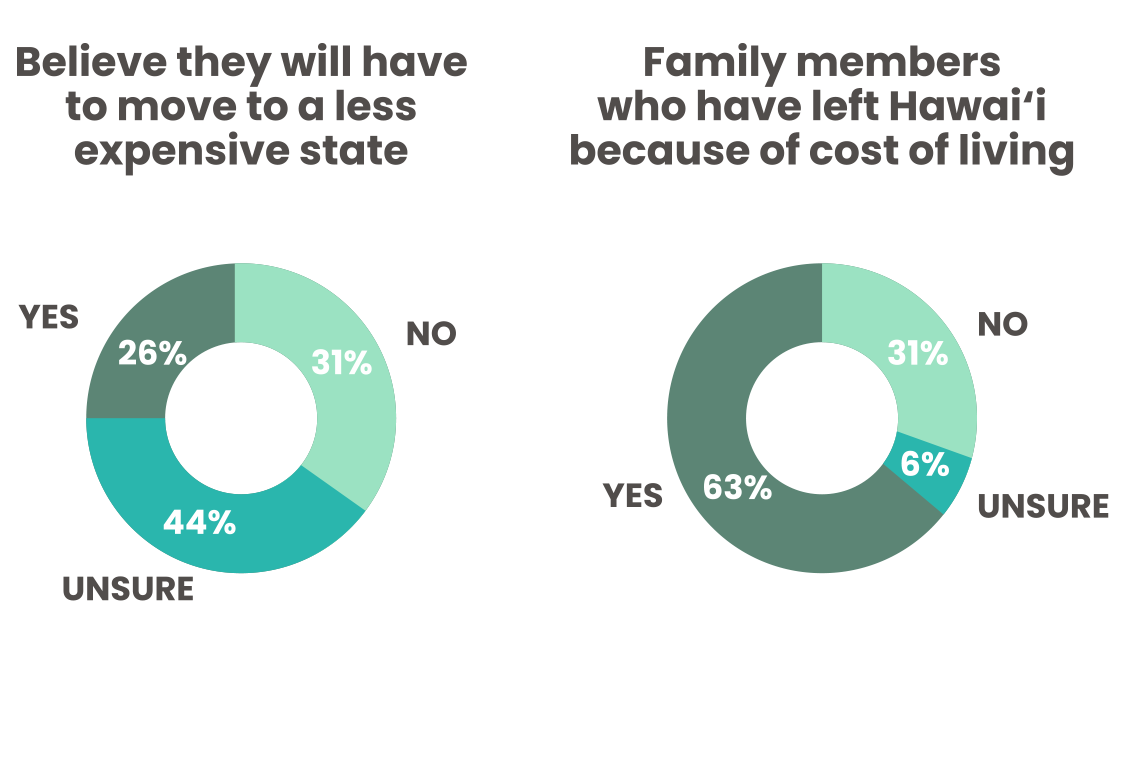
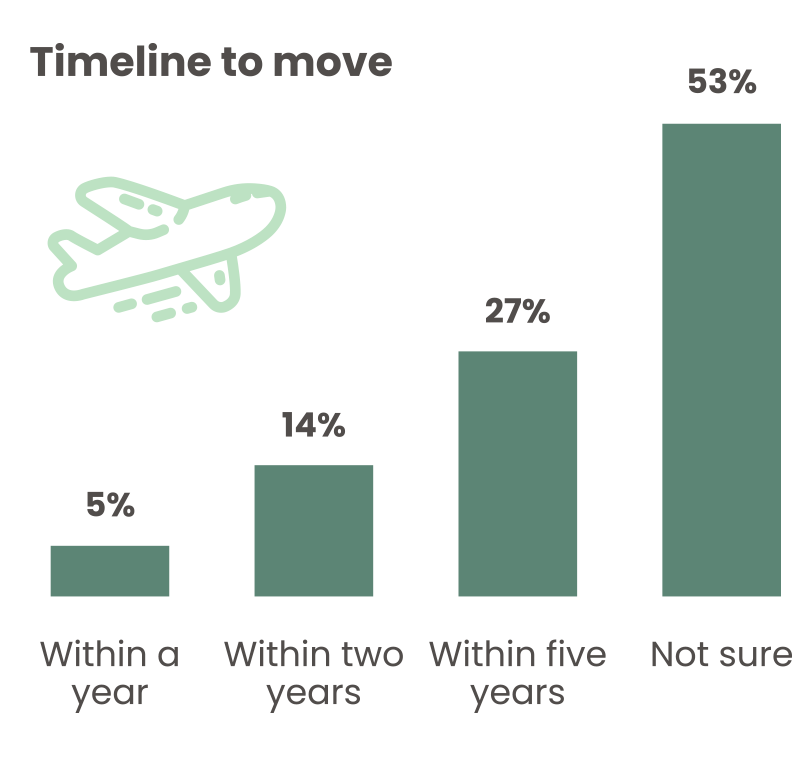
There’s an urgent need to retain our workforce

“Hawaiian lands in Hawaiian hands, we need to move towards a reality where we are less reliant on tourism dollars and more self-sufficient. Kānaka and kama‘āina need housing on the limited area we have.”
“If it were easier to find affordable housing that you don’t need to make under a certain threshold in a year, that would be great. I think the lower-middle and middle class are heavily forgotten about. Also, inflation is very high. Groceries and gas are very expensive nowadays and seem to get worse over time. There’s quite a few things that could be improved here, but it’s hard not to look elsewhere when cost of living in many other states is significantly lower.”
“Have affordable housing for both rental or buying that truly was 30% of typical income.”
Over 80% of the respondents agree that Hawai‘i needs to…
Build more housing for local residents
Increase access to childcare and education for children ages 0-5
Do more to recruit and retain critical workforce members (educators & healthcare workers)
Do more to increase access to renewable energy saving for homeowners and renters
If you could change one thing to make it possible for you to stay in Hawai‘i, what would it be?
“Create more incentives, benefits, tax breaks etc. for the middle class. Create affordable homes for not low income but those who have lived here 10 plus years and haven’t owned a home and can’t sell for 10 years with lenders who can give decent percentage interest rates for these specific homes.”
“Cost of Living expenses in Hawai‘i are astronomically higher here than the vast majority of the United States. The only way I see locals being able to afford a life here is either the wages offered by employers is raised or the cost of living is lowered.”
“Affordable housing, i would love to buy a home but i cannot see paying 1.2 million for a home I know isnt worth that much and will need work to up keep or repair. We have discussed moving to another state because we have moved twice in 2 years and if this keeps happening then it makes sense to leave the state.”
“Making housing more available and attainable to local families. It would also help if there were some kind of regulations on folks moving to the island to help limit the amount of homes that get scooped up by outsiders (that most times are used as STVR or go many months of the year unoccupied). If we all weren’t so worried about not having a place to live or potentially losing our residence because we don’t own it… I think we would could live much more fufilling lives. That residual stress affects every part of our lives (including work).”
“Affordable prices for single family homes that are not for low-income folks.”
Demographic Insights: Profiling Hawai‘i’s Workforce Across Diverse Sectors
SMS surveyed employees of 14 local for-profit and non-profit organizations. The organizations ranged in size from less than 10 to over a thousand employees. The organizations involved cover a wide range of areas including energy, construction, retail, finance, healthcare, education, and more.
The majority of respondents are middle-aged (35 to 54 years old) and predominantly women (64%), and more than half are married. Most respondents have a college degree or post-graduate degree (51%). Households commonly have two full-time employed individuals (50%). Income levels vary, with 64% earning $100,000 or more, indicating a high representation of middle to upper-middle income earners.
A large portion of respondents are long-term residents, with most being lifetime residents (61%). Eighty-five percent of respondents are registered voters, and 75% voted in the last election. High voter registration and participation rates indicate strong civic engagement among the respondents.
